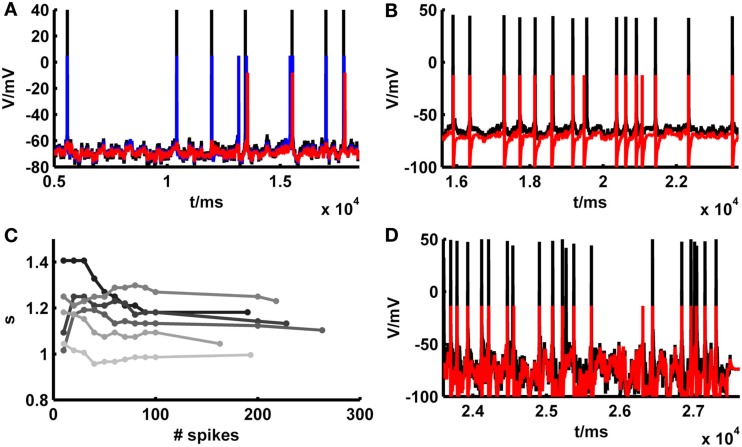Figure 6.
Illustration of spike prediction performance under various conditions with and without scaling factor. (A) Example where test set performance of the simpAdEx for a layer-5 pyramidal neuron (red; <Γmod/Γcell> = −0.02) is significantly improved by including a scaling factor (blue; <Γmod/Γcell> = 0.79). Original traces are given in black (σ = 50 pA, μ = 25 pA). (B) Performance of the simpAdEx on a test set with a scaling factor only adjusted on the first half of the fluctuating trace (not shown) for a fast-spiking interneuron from rodent prefrontal cortex (σ = 50 pA, μ = 50 pA). (C) The optimal scaling factor s as a function of the number of spikes used to determine s. Six different test sets are shown in different shades of gray for a layer-5 pyramidal neuron. (D) Test set performance of the simpAdEx for a layer-5 pyramidal neuron (without scaling factor) under high input variation modeled as an Ornstein–Uhlenbeck process (σ = 400 pA, μ = 25 pA).

